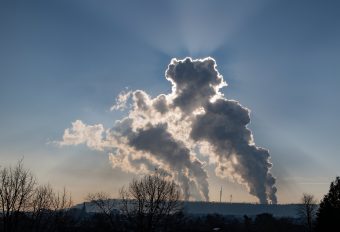
Last year’s emissions under the EU’s Emission Trading System (ETS) show the most significant annual emissions reductions since the ETS was launched in 2005. The main driver is the power sector’s significant progress in decarbonisation.
The data reported by EU Member States as of 2 April 2024 show a 15.5 per cent decrease in emissions in 2023, compared to 2022 levels. With this development, ETS emissions are now around 47 per cent below 2005 levels and well on track to achieve the 2030 target of -62 per cent.
The observed trend confirms the effectiveness and efficiency of the EU’s cap and trade system as the main policy instrument for the decarbonisation of the European economy.
Electricity generation – significant increase in production of renewable energy
The most important driver for the record decrease in EU ETS emissions has been the power sector, with emissions from electricity production having decreased by an impressive 24 per cent compared to 2022. This decrease is due to a substantial increase in renewable electricity production (primarily wind and solar), at the expense of both coal and gas.
The recovery of hydro and nuclear power due to more favourable climate conditions also contributed to the emissions decrease, but to a lesser extent.
More:
- AFTER SLIGHT RISE IN 2023, METHANE EMISSIONS FROM FOSSIL FUELS ARE SET TO GO INTO DECLINE SOON
- CAN METHANE EMISSIONS MATCH CLIMATE GOALS BY 2030
- FLUORINATED GASES AND OZONE-DEPLETING SUBSTANCES: COUNCIL GREENLIGHTS NEW RULES TO REDUCE HARMFUL EMISSIONS
Industry – emissions continue to decrease
Regarding energy intensive industry sectors, a reduction of emissions of around 7 per cent compared to 2022 can be observed. The emission reductions in the industry sector are the result of a combination of reduced output and efficiency gains which are mainly visible in cement, iron and steel.
Aviation – further rebound in emissions
Aviation emissions increased compared to 2022, by around 10 per cent. This is a consequence of the aviation industry’s continued rebound from the traffic collapse during the COVID19 pandemic.
Source: European Commission



